Small Purchases with Grant Funds

The small purchases are often the ones that can skew the budget if unchecked. Maximize your reimbursements and make sure everything you’ve spent is covered by following these three simple steps – and by three steps, I think I mean four. Join us as we examine how to make small purchases with grant funds. In our FEMA Quest game, this corresponds to the Lil Money Loop.
We are providing grant management best practices so that you and your team will learn how to manage FEMA grant accounting basics. If you appreciate this presentation, please share it.
Subscribe to our YouTube Channel
Standards for Small Purchases

What is a small purchase? A small purchase involves procurement for a product or service that fits between micro and large. Not so helpful was that. Sorry. Let’s start over. You either have or don’t have a procurement policy. The United States Federal Government provides a definition of small. It falls below the Simplified Acquisition threshold and above $3,000 (micro). Under normal circumstances that value is $250,000.

I looked up Arizona’s policy and I did not see a policy definition there for small. I am not an expert and only been a tourist in that great state. Their policy stated that in the event of federal funding their policy guidelines revert to the federal.
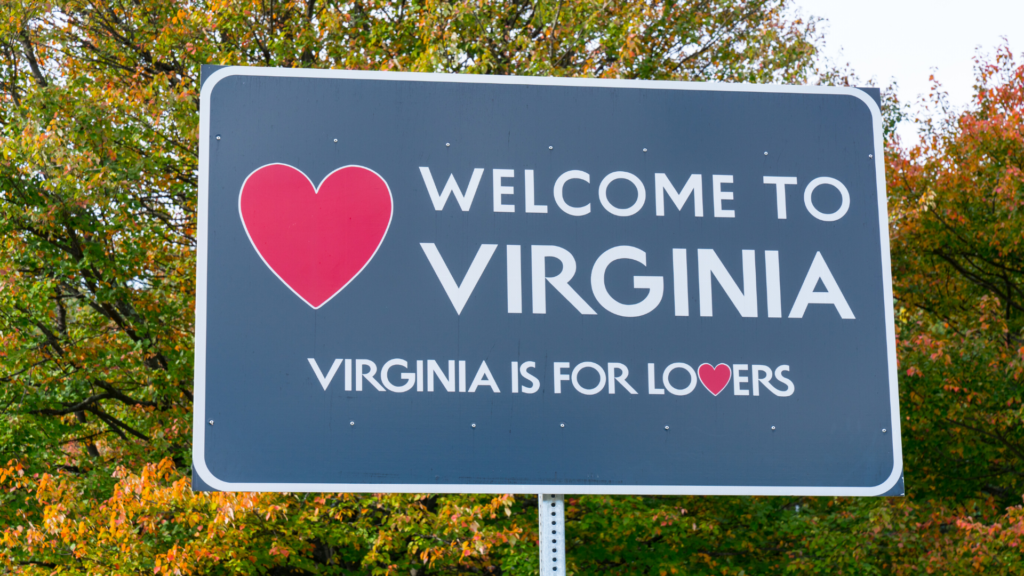
I went and looked up Virginia’s policy. They did offer a definition, it’s basically $100,000. Clearly, if you are in Virginia read their policy. I am using this as an example. I see exceptions to this policy in the black-and-white on the left screen. The policy is § 2.2-4303. Methods of procurement G.1.
My little town has a threshold at $10,000.

The standard guidance for “small” purchases is that you documented that you have done some shopping. You found three or four or more competitive prices, you’ve then gotten three email quotes, looked up on-line, that sort of thing. You need to confirm that your price is reasonable.
Almost all of us know the basics of shopping and price comparisons. The difference with small purchases with grant funds is the documentation.

First, write a little memorandum for record or email to your boss, or pass a motion that states your purchase is small because it is below this threshold and above that one.

Second, do your price comparison and shopping. But add the steps of printing the prices you see to a PDF document – or better yet, print that paper, sign it and date it. You don’t have to pick the cheapest. Identify the precise product or service you need. You can’t run tissue paper through your printer. You may need good quality archival acid-free paper. Price compare that. Gather your competitive research, print it to a PDF and save it.
Third, run the name of the vendor through sam.gov. Print that to PDF; that page proving that the vendor is not debarred by the federal government. If your state has such a tool, use that as well.
Four, issue the purchase order, or execute the purchase as you normally would. This time, scan the purchase order, the invoice, and delivery receipt to a PDF. And get a copy of the cancelled check, ACH payment, or credit card statement that proves it was paid.
Managing Disaster Relief Grants
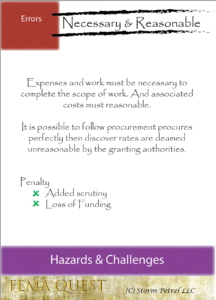
FEMA grant accounting basics – we want to get reimbursed for that purchase. Together, we are studying how to manage disaster relief grants. If you don’t have Tempest-GEMS, you’ll need a manual method for tracking these expenses. In Tempest-GEMS, it is easy. Let’s recap. You have the following documents scanned and ready to go: justification for purchase method, price comparison, debar check, and invoice with proof-of-payment.
Creating a New Vendor

First, we’ll create a new vendor. There is a map-pin icon on the blue menu to the left, near your applicant’s name. Open vendor. You really don’t need training on the how, but I do want to touch on some important items! In tempest-GEMS, green buttons add. We’ll add a vendor called Acme Insurance.
Please note that we ask you, as a reminder, to do a debar check. And if so, when. These questions are to help you. FEMA does not provide a lower threshold on debarment checks. Just the hint. FEMA says do it. So why not. Takes a second.
Adding the Debarment Check
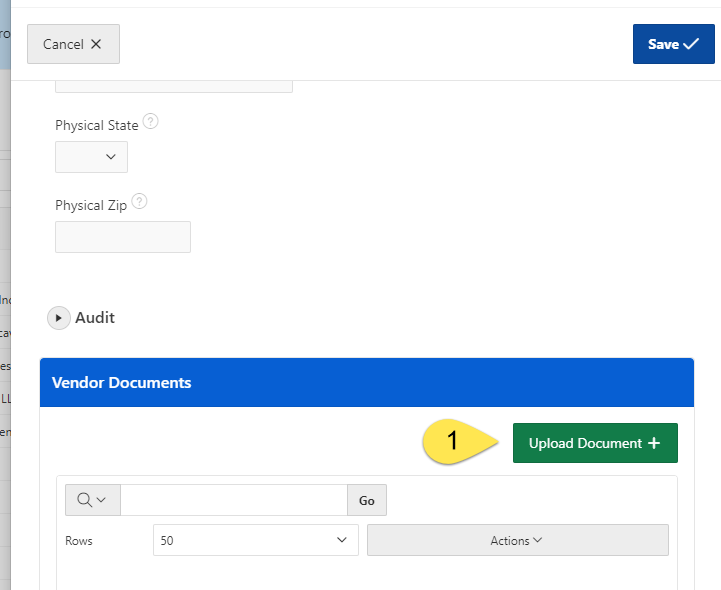
Now upload the debarment check with the Vendor. Done once, saved. Good for you!
Data Entry & Supporting Documentation
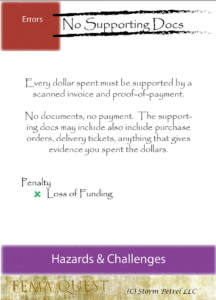
Second step, because we are using grant management software, we do the data entry. This is just like popular accounting systems. Vendor, invoice number, description, date and that sort of thing. But because Tempest-GEMS is not an accounting system, you’ll need to tell it (and your state and FEMA) that the invoice is paid. Only paid invoices are eligible for reimbursement. Mark it as paid, provide the paid date, the check number, EFT/ACH number, what ever that is.
Third step, you upload the supporting documentation. You can upload one or any many as you want. You’ll want to upload the invoice and proof-of-payment at a minimum. The bonus points go for the competitive research you did. And the super bonus point for that silly memo stating why this is a small purchase.
You tick those boxes, do accurate data entry and upload those documents and you are golden.
Closing Warnings
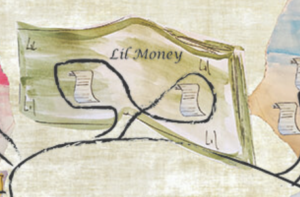
When you make small purchases with grant funds, you can circle around and around on the Lil Money Loop making small purchases and reporting them. There are a couple of closing warnings.
Warning number one, the prevailing rule for FEMA assistance is always: necessary and reasonable. Keep that in mind.
Warning number two, the federal government and most states frown on using the small purchase process if your annual aggregate expense with that vendor or product exceeds the threshold. That sounds like you dodged some rules. Just be aware.
And on a happy note, a lot of popular on-line vendors for office supplies have pre-competed government pricing. If use those vendors, you just simplified things a lot. No debar check. No competitive steps.
Simplified Procurement Process

FEMA assistance comes with strings… Small purchases fall below the competitive procurement threshold. The simplified procurement process suggests you note why you are using a small purchase process – a test to see if you know the threshold and rules. Second, a bit of price shopping that you keep as PDFs. Third, do a debar check at sam.gov. Execute your purchase, then put all of that data and documents in Tempest-GEMS readying you for your next reimbursement, moving you closer to close out!
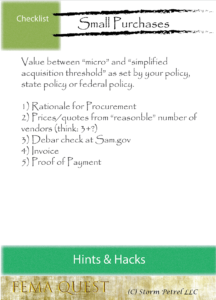
Please share this material with colleagues. Post about us and our efforts on your favorite social media platform. And don’t forget to grab the Small Purchase Hints and Hacks Guide to help you get started with FEMA Quest.
Small Purchase Hints and Hacks Guide